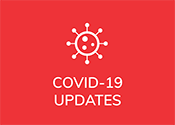Combination therapies were a hot topic at the American Society for Hematology meeting held in December 2022. In this video, Dr. Brian Koffman interviewed Dr. Neil Kay, Professor of Medicine and hematologist at Mayo Clinic. They discussed combination therapies for treating CLL and SLL, focusing on the combination of ibrutinib and venetoclax.
Why are doctors interested in using combination therapies?
Most of the research in CLL / SLL right now is looking at whether or not using two or three targeted therapies at the same time that each have different mechanisms of action could result in deeper remissions. For example, one approach they are looking at is combining ibrutinib, which is a BTK inhibitor, with venetoclax, which is a BCL2 inhibitor. Both BTK and BCL2 are proteins that are key to the survival of CLL / SLL cells, and by inhibiting both of them at the same time you are blocking two cellular pathways that normally help cancer cells survive. Some preclinical studies show that ibrutinib and venetoclax may work synergistically, meaning their combined effect is more significant than their individual effects. The hope is that blocking the cancer’s ability to survive through multiple pathways will eliminate more cancer cells, resulting in patients achieving deeper remissions and possibly being able to go off treatment faster than usual.
What have clinical trials shown?
Many different clinical trials were presented at ASH 2022, including several on the combination of ibrutinib plus venetoclax. We have covered many of these:
- Ibrutinib plus venetoclax as a first-line therapy: CAPTIVATE (phase 2), GLOW (phase 3), FLAIR (phase 3), and another phase 2 trial from MD Anderson Cancer Center
- Ibrutinib plus venetoclax for relapsed/refractory CLL / SLL: CLARITY (phase 2)
- Adding venetoclax to ongoing ibrutinib therapy: Phase 2 trial from MD Anderson Cancer Center
The data from these trials consistently show that the combination of ibrutinib plus venetoclax induces remissions in most patients. Those remissions will likely last for a long time (though it is still too early in these trials to say for sure how long). Most patients can reach undetectable measurable residual disease (uMRD) in the blood and/or bone marrow, which predicts longer progression-free survival. Keep in mind that many of these trials are still ongoing.
Are there any additional toxicities when you use combination therapies?
When you combine multiple drugs, there is always a concern that this may cause new side effects or more severe side effects that would make the combination approach more difficult to tolerate. Thus far in these ongoing trials, there have not been any new safety signals that would cause alarm. The safety profile is typical of what you expect from ibrutinib and venetoclax.
Who should be using combination therapies?
This question is still up for debate. Several trials are looking at ibrutinib combined with venetoclax as a first-line therapy for patients who have never been treated. However, it is unclear if this powerful combination therapy should be an appropriate first-line treatment option for all patients. It may be better to reserve it only for younger patients with high-risk biomarkers or patients with relapsed/refractory disease. In addition, we still don’t know the best way to sequence all these therapies that are now available for treating CLL / SLL.
Interestingly, patients with prognostic biomarkers traditionally associated with worse outcomes (deletion 17p, TP53 mutation, etc.) seemed to respond just as well to combination therapy as patients without these markers. In addition, patients with unmutated IGHV (usually a poor prognostic marker) seemed to do slightly better than those with mutated IGHV.
What is the role of MRD?
While the MRD results from these studies are pretty exciting, all the studies used different methods to assess MRD. Before MRD measurement gets implemented in clinical practice for CLL, researchers and clinicians must reach a consensus on how and when MRD should be evaluated and what methodology should be used. There also needs to be a consensus reached by CLL experts on how exactly to integrate MRD measurement into traditional clinical evaluations for those with CLL (history, physical, imaging, and bloodwork).
Links and Resources:
Watch the interview here:

















